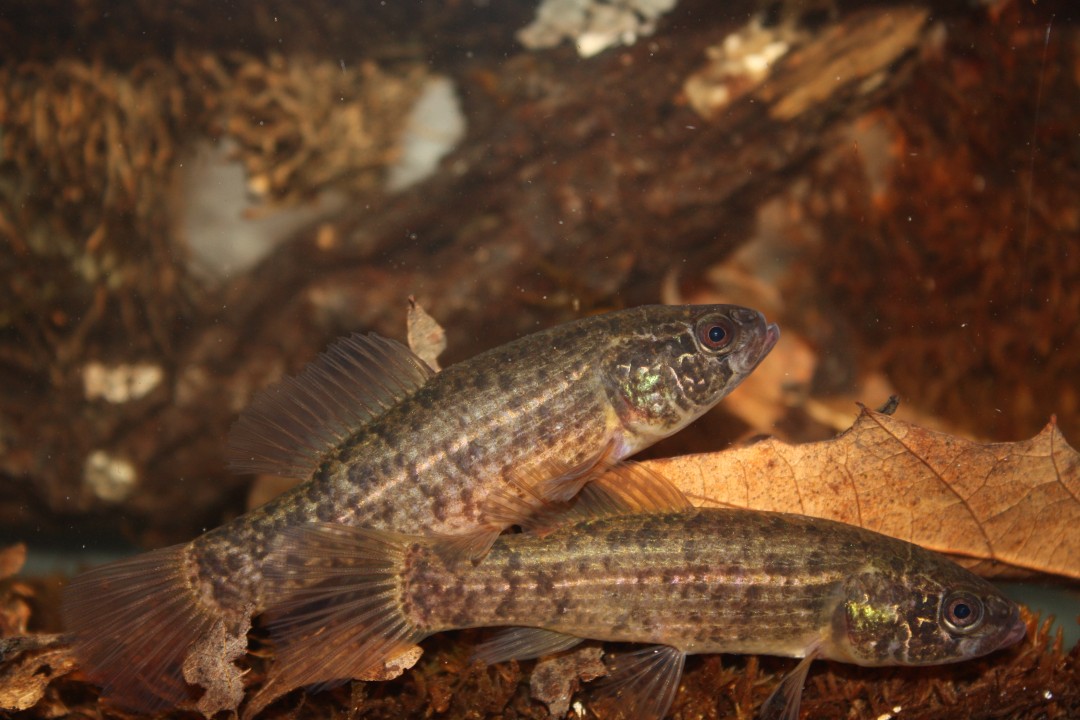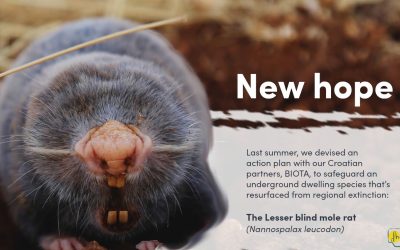From lush forests to vibrant coral reefs, every species plays a crucial role in maintaining ecological balance. However, one of the more challenging ecosystems to monitor is the aquatic environment, primarily due to the difficulty we have in observing it—a medium where our visibility is significantly limited. Faced with human activities and environmental changes, many species are threatened with extinction. This is where biodiversity monitoring becomes an essential tool in conservation efforts. Systematic monitoring of species populations, their distribution, and health provides valuable insights into ecosystem dynamics and helps detect early signs of population decline. For endangered species, timely monitoring is critical to implement effective conservation strategies and ensure their survival.
Wetland habitats, such as those inhabited by the Mudminnow (Umbra krameri), pose significant challenges for research due to dense vegetation and deep layers of silt, which make movement difficult. In such cases, a small boat proved to be the only viable method for conducting the survey.

To study the Umbra krameri population in the area of “HR2001031 Odra near Jagodno,” we applied the “Removal” sampling methodology to estimate population size. The main objectives of this research were to estimate the population size of the species at selected sites, gather information on other fish species, and document the factors contributing to its endangered status.
Electrofishing as a Key Data Collection Method
Electrofishing, using a backpack electrofisher, has proven to be one of the most widely accepted and effective methods for collecting quantitative and qualitative data on freshwater fish. This technique allows for the safe capture of fish with minimal injury or stress, enabling the collection of vital population data. In this study, electrofishing was used to provoke an electrotaxis response in the fish, making it easier to extract them from the water. The method does not harm the fish, and they can be returned to their habitat after collection.

The “Removal” Methodology
The “Removal” methodology for estimating population size is a common technique in ecological research. It involves capturing or marking individuals of a species, temporarily removing them from the population, and then recapturing or observing them to assess changes in population size. The difference between the first and second rounds of sampling provides an estimate of the population. In this study, we conducted the first capture on a 10-square-meter plot, placing the captured fish in a holding container. After approximately 30 minutes, we repeated the sampling in the same area, again removing all captured fish into the container.
This method operates on the assumption that each round of capture reduces the number of available individuals for subsequent captures. The rate at which the number of available individuals decreases allows us to estimate when no more fish will be available for capture and approximate the initial population size before any removals—i.e., the total population being studied.
All captured U. krameri individuals were stored in an aerated container filled with water, and basic body measurements (such as length and weight) were taken. After two rounds of capture, all fish were safely returned to their habitat.
This method is particularly useful for estimating populations that are difficult to count in mosaic terrains (with dense vegetation) or in cases where long-term monitoring is required. However, careful planning of the removal and recapture process is necessary to minimize impact on the population and ensure the reliability of the results.

Data Analysis and Population Size Estimation
The study covered seven sites within the Natura 2000 “HR2001031 Odra near Jagodno” area, documenting a total of 13 fish species, with U. krameri dominating, accounting for 63% of the total number of captured fish. Using a population size estimation formula, precise data on the U. krameri population was obtained at each surveyed site.
The habitat of U. krameri is highly threatened due to human perceptions that these wetlands are unsightly or “mosquito breeding grounds.” This often leads to pressure to dredge, deepen, or stock these habitats with carp, all of which contribute to the decline in U. krameri populations.
Conclusion
The methodology used in this study combined traditional and modern techniques to ensure an accurate and reliable population estimate of this endangered species. Population densities ranged from a minimum of 0.14 individuals per square meter to a maximum of 1.62 individuals per square meter (equivalent to 1,400 to 16,200 individuals per hectare). The average estimated population density was 0.38 individuals per square meter (~3,800 individuals per hectare). The results provide valuable information about the state of the U. krameri population and its environment, serving as a foundation for future management and conservation of this ecologically significant area. The “Removal” method proved to be an excellent choice given the inaccessible terrain and the endangered status of the species.
All the fish involved in this study happily resumed their day-to-day activities in the Odra River. 😊





0 Comments